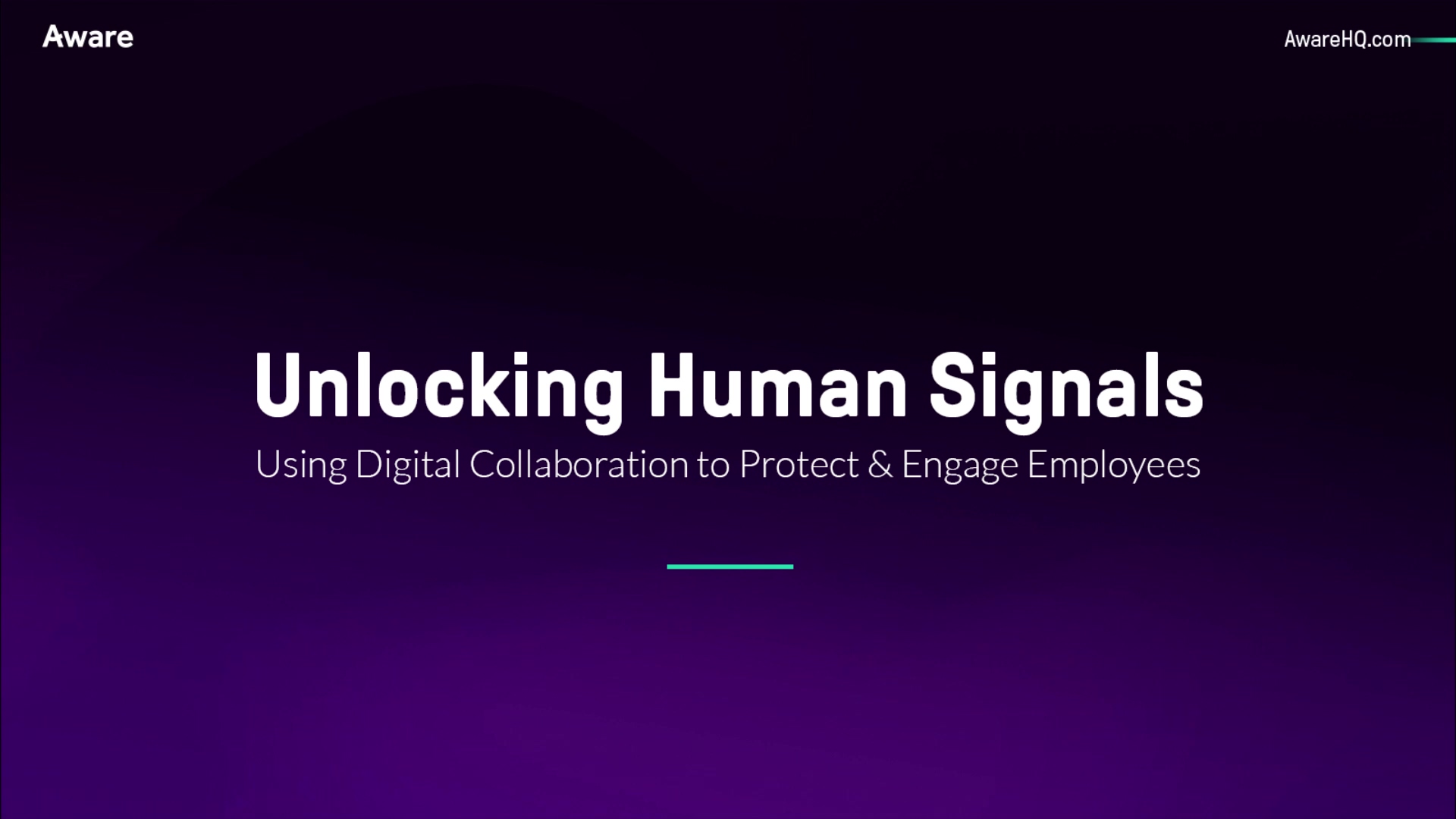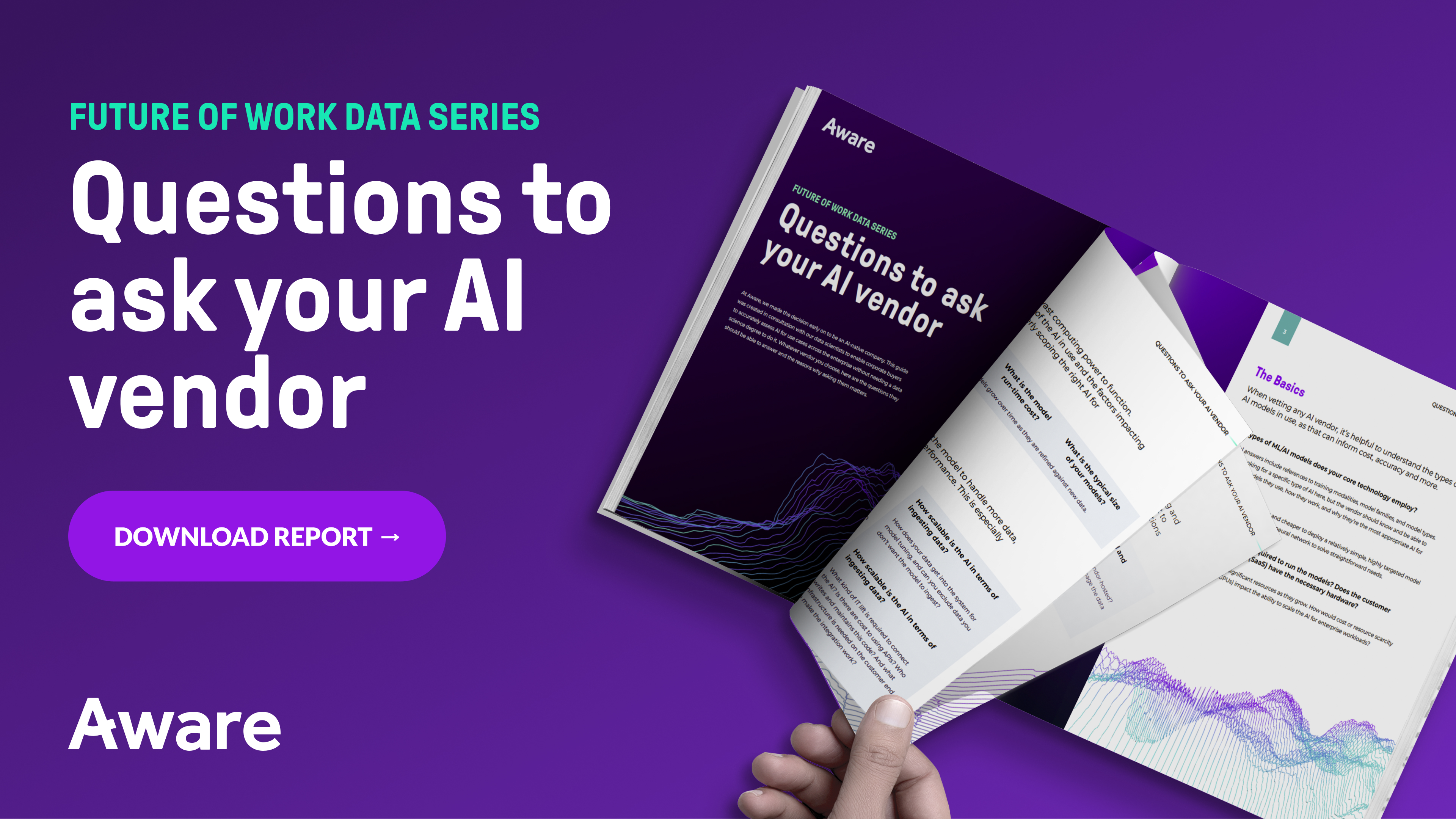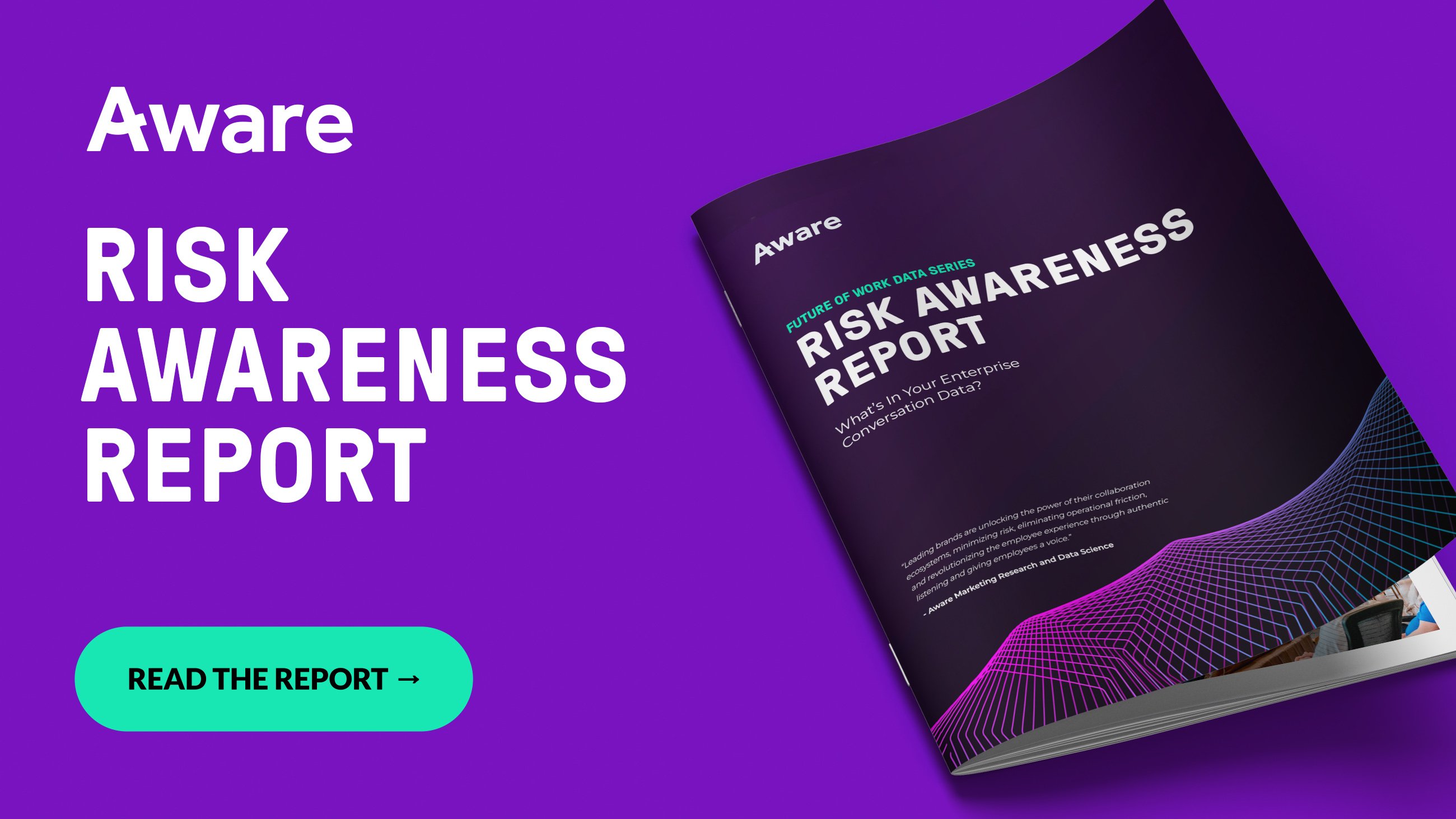Using AI to Identify and Reduce Sexual Harassment at Work
by Aware
First Published May 2018. Updated Mar. 2024.
A staggering 25% of women will experience sexual harassment in the workplace at some point in their career. And the reality is, sexual harassment cases – reported or unreported – are harmful, and expensive, to both the employee and to the company.
Sexual Harassment Cases Impact Your …
… Employees.
When leading people, it’s important to consider the impact a company has on the employee. In the case of sexual harassment, the cost to the victim is huge. Psychologically, victims may experience PTSD, depression or anxiety. And financially, studies show that victims of sexual harassment experience fewer promotions, raises, and career opportunity.
… Culture.
Often when a sexual harassment incident is uncovered, there is more than one victim and more than one instance. The cost of a wounded culture cannot be understated, leading to increased turnover, reduced productivity, and decreased brand sentiment. Protect your company, and its culture, by investing the time and resources in minimizing and removing these toxic scenarios when you can.
… Company.
Any alleged harassment case, sexual or otherwise, is expensive to companies.
Assuming that the claim is settled out of court, the average harassment claim will typically cost an organization anywhere from $75,000–$125,000.
If the situation escalates to court or hits the press, organizations face both financial and organizational costs to deal with litigation, public relations and brand reputation management. So, how can organizations get in front of these cases before they escalate, and before they hit headlines or the courtroom?

Listen authentically to your people. Watch the webinar now
How Many Sexual Harassment Cases Go Unreported?
It feels like every day a new story breaks about sexual harassment. Unfortunately, the published stories capture only a small sampling of the bigger picture.
Roughly 3 out of 4 individuals who experience harassment say nothing. Some fear that reporting incidents won’t make a difference, while others fear that it will make the situation worse.
AI and Human Resource Management
Risk mitigation – whether it’s the risk of harassment or the risk of a data breach – follows a basic process:
- identify areas of risk,
- monitor for infractions,
- and respond accordingly.
While the conversation of leveraging advanced technology to monitor employees is a fairly recent one, information and cyber-security teams have used technology to monitor and secure sensitive data transmission for decades. Cyber-attacks started to take on headlines in the early 2000s after Albert Gonzales stole at least 45.7 million payment cards from TJX, the parent company of TJ Maxx. The leak cost the company at least $256 million.
Unfortunately, the average number of data breaches has increased ten-fold since 2005. As a result, the infosecurity and data security industries continue to evolve with the demand. One of the key technologies used in protecting sensitive information leaks is artificial intelligence (AI). An AI algorithm uses Machine Learning (ML) to adapt over time, making it more ‘smart’ and ‘secure’ over time.
And now, AI technology is quickly entering the human resources space, monitoring and protecting the more complex and human side of digital workplace communications.

Buying AI? Here's what you need to know
The Role of AI in HR to Reduce Sexual Harassment in the Workplace
Artificial intelligence just might be the HR solution to help identify instances of sexual harassment before the situation spirals for both the victim and the company.
Without artificial intelligence algorithms, monitoring platforms on the market leverage only keyword matching to identify suspicious instances of digital communications. Keyword detection alone often results in a number of false positives and, without the contextual analysis of AI, toxic situations go undetected.
By leveraging AI-infused technology, such as Aware, organizations can identify, investigate, and handle offensive communications in the early stage -- without requiring the victim to report the incident to a superior.
With artificial intelligence in the workplace, the 75% of sexual harassment cases that typically go unreported, can be automatically identified. Armed with this AI technology in the HR space, organizations can protect employees, the company, and the culture from malicious employees who would otherwise be toxic to the workforce.









